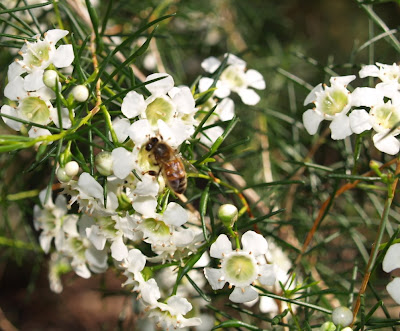
 Elegia capensis
Fountain Rush
Elegia capensis
Fountain Rush
This is a striking foliage plant from South Africa which forms a large clump to about 3 metres tall. It naturally grows close to streams in Winter rainfall areas which dry out in Summer, so technically it could be included with water plants. Trouble is, in areas with summer rainfall it can rot and die back especially under humid coastal conditions. This was the case when I grew it. It is probably better suited to places with a cool temperate or Mediterranean climate or, if growing on the coast, it needs to be placed in a raised garden bed. It is an excellent contrast plant with spiky or stiff foliaged plants.The stems also make wonderful cut flowers when they produce the red-brown arching tassel flower in Spring.
2017 update: Have not seen it available in the nursery trade for a number of years.




 Persoonia pinifolia
Persoonia pinifolia  Kalanchoe thyrsiflora
Kalanchoe thyrsiflora 
 Melaleuca micromera
Melaleuca micromera

 Kennedia nigricans
Kennedia nigricans

 Magnolia x soulangeana
Magnolia x soulangeana Banksia media
Banksia media


 Chamaelaucium uncinatum
Chamaelaucium uncinatum
 Pterostylis species
Pterostylis species
 Elegia capensis
Elegia capensis